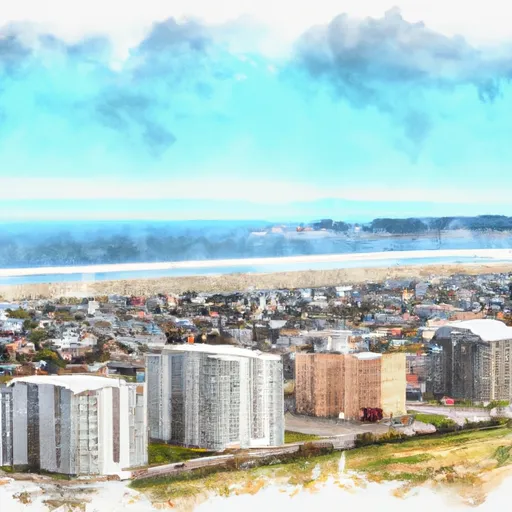-
 Snoflo Premium
Snoflo Premium
Get unlimited access to all our content
With no Ad interruptions! - Start Your Free Trial Login with existing account
Long-Beach
Eden Index
Climate
5.9
•
Recreation
4.6
•
Community
2.0
•
Safeguard
4.5/10

Long Beach, Washington is a charming coastal town located on the scenic Long Beach Peninsula. Known for its mild and temperate climate, the area experiences cool summers and mild winters. The average temperature ranges from 45°F (7°C) in winter to 70°F (21°C) in summer, making it an ideal destination for outdoor enthusiasts throughout the year.
The town is bordered by the Pacific Ocean, giving it access to stunning beaches that stretch for miles. Long Beach Peninsula is also home to several bodies of water, including Willapa Bay, a large estuary known for its diverse aquatic life. The hydrology constituents of the area include freshwater rivers, wetlands, and sand dunes, providing a rich ecosystem for exploration.
Outdoor recreation opportunities abound in Long Beach. Visitors can engage in activities such as kite flying, beachcombing, birdwatching, and hiking along the various trails. Fishing enthusiasts can cast their lines in the ocean or rivers, while kayakers and paddleboarders can explore the calm waters of the bay. The area is also a popular destination for clam digging and crabbing.
With its pleasant climate, diverse hydrology constituents, and a plethora of outdoor activities, Long Beach, Washington offers a delightful experience for nature lovers and adventure seekers alike.
What is the Eden Index?
The Snoflo Eden Index serves as a comprehensive rating system for regions, evaluating their desirability through a holistic assessment of climate health, outdoor recreation opportunities, and natural disaster risk, acknowledging the profound impact of these factors on livability and well-being.
Climate Health Indicator (CHI): 5.9
Long-Beach receives approximately
1998mm of rain per year,
with humidity levels near 86%
and air temperatures averaging around
10°C.
Long-Beach has a plant hardyness factor of
8, meaning
plants and agriculture in this region tend to thrive here all year round.
By considering the ideal temperature range, reliable water supplies, clean air, and stable seasonal rain or snowpacks, the Climate Health Indicator (CHI) underscores the significance of a healthy climate as the foundation for quality living.
A healthy climate is paramount for ensuring a high quality of life and livability in a region, fostering both physical well-being and environmental harmony. This can be characterized by ideal temperatures, reliable access to water supplies, clean air, and consistent seasonal rain or snowpacks.
Weather Forecast
Streamflow Conditions
Washington Coastal
Area Rivers
Washington Coastal
Snowpack Depths
Washington Coastal
Reservoir Storage Capacity
Washington Coastal
Groundwater Levels
Recreational Opportunity Index (ROI): 4.6
The Recreational Opportunity Index (ROI) recognizes the value of outdoor recreational options, such as parks, hiking trails, camping sites, and fishing spots, while acknowledging that climate plays a pivotal role in ensuring the comfort and consistency of these experiences.
Access to outdoor recreational opportunities, encompassing activities such as parks, hiking, camping, and fishing, is crucial for overall well-being, and the climate plays a pivotal role in enabling and enhancing these experiences, ensuring that individuals can engage in nature-based activities comfortably and consistently.
Nearby Ski Areas
Catastrophe Safeguard Index (CSI):
The Catastrophe Safeguard Index (CSI) recognizes that natural disaster risk, encompassing floods, fires, hurricanes, and tornadoes, can drastically affect safety and the overall appeal of an area.
The level of natural disaster risk in a region significantly affects safety and the overall livability, with climate change amplifying these risks by potentially increasing the frequency and intensity of events like floods, fires, hurricanes, and tornadoes, thereby posing substantial challenges to community resilience and well-being.
Community Resilience Indicator (CRI): 2.0
The Community Resilience Indicator (CRI) recognizes that education, healthcare, and socioeconomics are crucial to the well-being of a region. The CRI acknowledges the profound impact of these elements on residents' overall quality of life. By evaluating educational resources, healthcare accessibility, and economic inclusivity, the index captures the essential aspects that contribute to a thriving community, fostering resident satisfaction, equity, and social cohesion.

